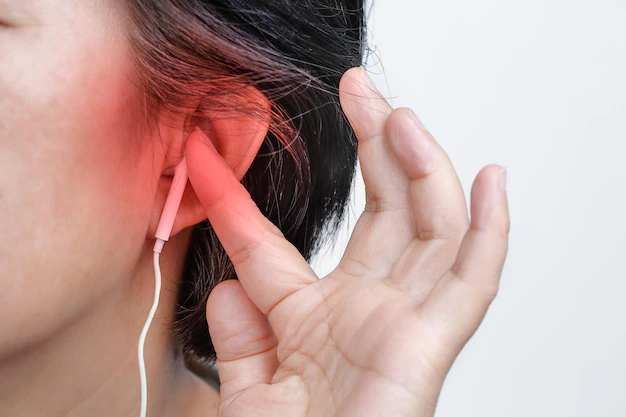Earphones or headphones can not only harm the body but can also become a bad addiction. The music coming from earphones has a big impact on your eardrum, which can cause permanent damage. Watch the video till the end for more information.
Earphones and headphones have become ubiquitous companions, seamlessly integrating into our daily lives. They deliver immersive audio experiences, drown out distractions, and fuel our workouts. However, beneath the convenience and enjoyment lies a potential downside – the risk of hearing damage and even addiction. This isn’t to demonize these devices entirely, but rather to raise awareness and promote responsible listening habits.
The Delicate Mechanism of Hearing
Understanding how we hear is crucial to appreciating the risks associated with loud earphone use. Sound waves travel through the ear canal, vibrating the eardrum. These vibrations are then transmitted to tiny hair cells in the inner ear, which convert them into electrical signals sent to the brain, allowing us to perceive sound.
The Threat of Noise-Induced Hearing Loss (NIHL)
The human ear is remarkably adaptable, but it has its limits. When exposed to loud noises for extended periods, the delicate hair cells in the inner ear can become damaged or even die. This damage is permanent and leads to Noise-Induced Hearing Loss (NIHL).
Earphones: Potential Culprits of NIHL
Earphones and headphones position the sound source directly next to the eardrum. This proximity allows for high volumes to be delivered with minimal external sound leakage. Unfortunately, this convenience comes at a cost. Listening to music at high volumes, particularly for extended durations, can damage those hair cells, leading to NIHL.
Symptoms and Consequences of NIHL
The effects of NIHL can be insidious, developing gradually over time. Here are some tell-tale signs:
- Ringing or buzzing in the ears (tinnitus): This persistent ringing or buzzing sensation can be very bothersome and disrupt daily life.
- Muffled hearing: Sounds may seem dull or muffled, making it difficult to understand conversations, especially in noisy environments.
- Difficulty hearing high-frequency sounds: Birdsong, children’s voices, and certain musical instruments may become harder to distinguish.
NIHL is permanent and has no cure. Once the hair cells are damaged, they cannot regenerate. Early detection and adopting safe listening habits can help prevent further damage.
The Allure and Potential Pitfalls of Earphone Addiction
Beyond physical harm, excessive earphone use can also lead to a psychological dependence. The constant stream of audio stimulation can become a crutch, a way to escape boredom, anxiety, or social awkwardness. This dependence can manifest as:
- Compulsive Use: Feeling the need to use earphones constantly, even in situations where it’s impractical or inappropriate.
- Isolation: Withdrawing from social interactions and activities in favor of spending time lost in digital soundscapes.
- Neglecting Responsibilities: Important tasks and obligations may be neglected due to the allure of escaping into the world of earphones.
Striking a Healthy Balance: Safe Listening Habits
Here’s how you can enjoy the benefits of earphones while minimizing the risks:
- Volume Down: The golden rule is to keep the volume at a safe level. Aim for 60% of the maximum volume or lower. A good rule of thumb is if you can comfortably hear someone talking next to you with your earphones on, the volume is likely safe.
- The 60/60 Rule: Limit your listening time to a maximum of 60 minutes at a time, followed by a break to allow your ears to rest.
- Noise-Cancelling Headphones: Consider noise-cancelling headphones, which allow you to enjoy immersive audio at lower volumes by actively dampening external noise.
- Embrace the Silence: Disconnecting from earphones periodically allows your ears to rest and helps you maintain a healthy relationship with sound.
- Seek Professional Help: If you suspect hearing loss or have concerns about earphone dependence, consult a doctor or audiologist. They can assess your hearing health and provide guidance.
Earphones and headphones are valuable tools for entertainment, communication, and focus. However, responsible listening habits are essential to prevent hearing damage and avoid dependence. By adopting a balanced approach and prioritizing ear health, you can continue to reap the benefits of these devices for years to come.

